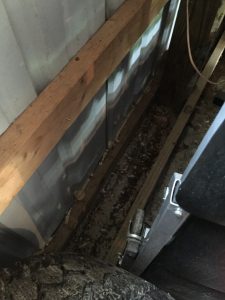Guest blog
Recently we had a client I will call Zelda, who was “up in arms” about her Dutch Doors “not fitting” after her barn was completed. She insisted they were not framed in correctly, and she was now in a panic wondering what she was going to do. Zelda insisted the doors were going to need to be “re-framed”. Zelda had hired a builder, so obviously she looked to us to verify if the doors were installed correctly.
The first thing we do at Hansen Buildings whenever a customer complains about something “not being built right” is to start from the beginning. This means we first make sure we ordered the right parts and then check to see if the right parts were delivered. Our first question to ourselves is always, “What did Hansen Buildings do wrong?” In this case, we could find nothing. We ordered all the right parts and they were all delivered. Next up, the builder.
Although our responsibility was fulfilled, we went a step further and called the building contractor. We wondered how this building got this far before the customer decided the doors were not going to open correctly – that they had been “framed too low”, causing the doors not to open. Interestingly, the builder related he was scratching his head about why the doors didn’t fit, as he insisted they “framed the openings perfectly” when he left the building site upon completion of the project. The builder then did what we would have done in this case – he requested photographs of the building and the doors from the homeowner. Surprise. Surprise. Much to his amazement (and ours) he quickly ascertained the door problem. The customer had brought in fill, and completely covered the 2×8 splash plank – right up to the bottom of the base trim!
Splash planks (formerly called “skirt boards” and most recently renamed “splash planks”; approved by ANSI – American National Standard as of January 2011), are meant to be in contact with the ground, but only on the bottom 1-1/2” edge. This means four inches of the 7.25” face of the 2×8 splash plank should be visible above grade. The top 3.25” is covered by the base trim and wall steel. The entire building is designed for doors, eave height and clearance within the building, based upon the bottom of the splash plank – being at grade level.
The Hansen Building’s construction manual very specifically describes the splash plank placement in relation to height measurements, and the plans clearly show where the splash plank “is” on all four elevation drawings. Nowhere does it show or say “it’s ok” to put fill up to the base trim!
 The dutch doors not fitting correctly isn’t bad enough. What this customer doesn’t realize, is although the splash plank is pressure treated and designed for in-ground use, bringing the ground level up to touch the base trim means potentially continuous moisture in contact with the steel. This will most certainly lead to the base trim rusting at some point.
The dutch doors not fitting correctly isn’t bad enough. What this customer doesn’t realize, is although the splash plank is pressure treated and designed for in-ground use, bringing the ground level up to touch the base trim means potentially continuous moisture in contact with the steel. This will most certainly lead to the base trim rusting at some point.
How can I be so sure about this? I purchased a 100’ x 100’ pole building with steel roofing and siding a few years back, construction circa mid 1970’s. The framework is solid, but major mistakes were made during construction, leading to unsightly erosion of the base trim, among other things. It occurs to me people get concerned about the “look” of the splash plank as it ages. Yes, it will turn gray over time.
If “looks” of the splash plank is an issue, my suggestion is to paint or stain it prior to installation. Actually, I say this in jest, because who wants to lay on the ground to scrape and repaint a board right down to the dirt once that paint or stain needs to be “freshened up a bit” in a few years time? Not me!
My advice – leave the skirt board “where” and “as” it was meant to be, sitting on top of the ground, left to “age”. Over time, no one really seems to notice the skirt board turning gray. If you have grass next to the building, it will hide most of the splash plank anyway. Just be sure to keep the weeds and grass cut down far enough so moisture doesn’t touch the base trim, causing it to rust.
Bottom line, follow ALL the directions and pay close attention to the plans when you build. If you want to do something to the building site before, during or after construction, please ask someone “in the know”. I really want clients to be happy with their buildings. Not just when the building is newly constructed, but 10, 20 and 30 years from now.
Thanks, Mike – for letting me sit on your Guru’s magic blanket today! J.A.Hansen






